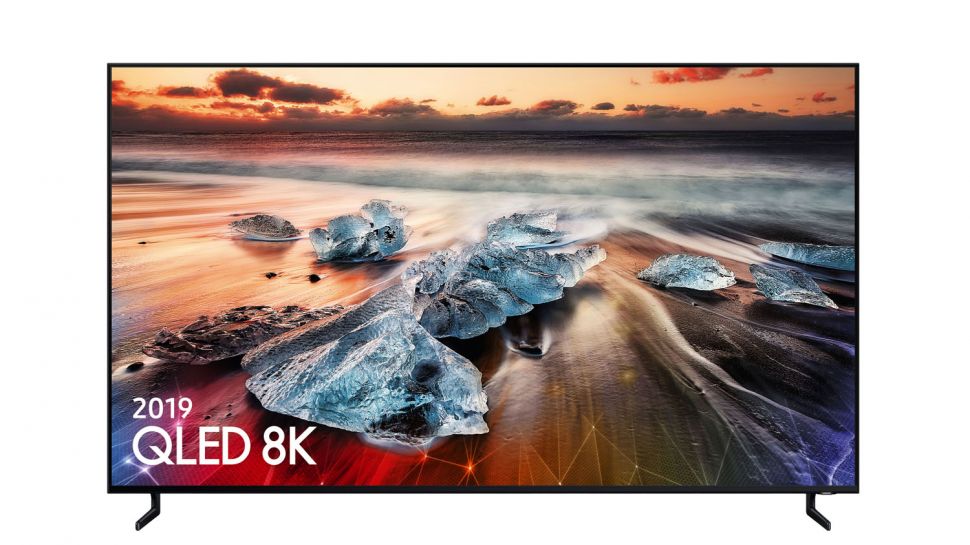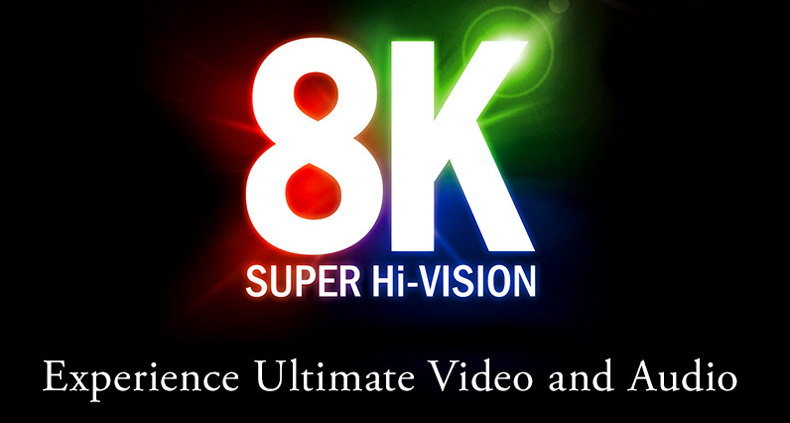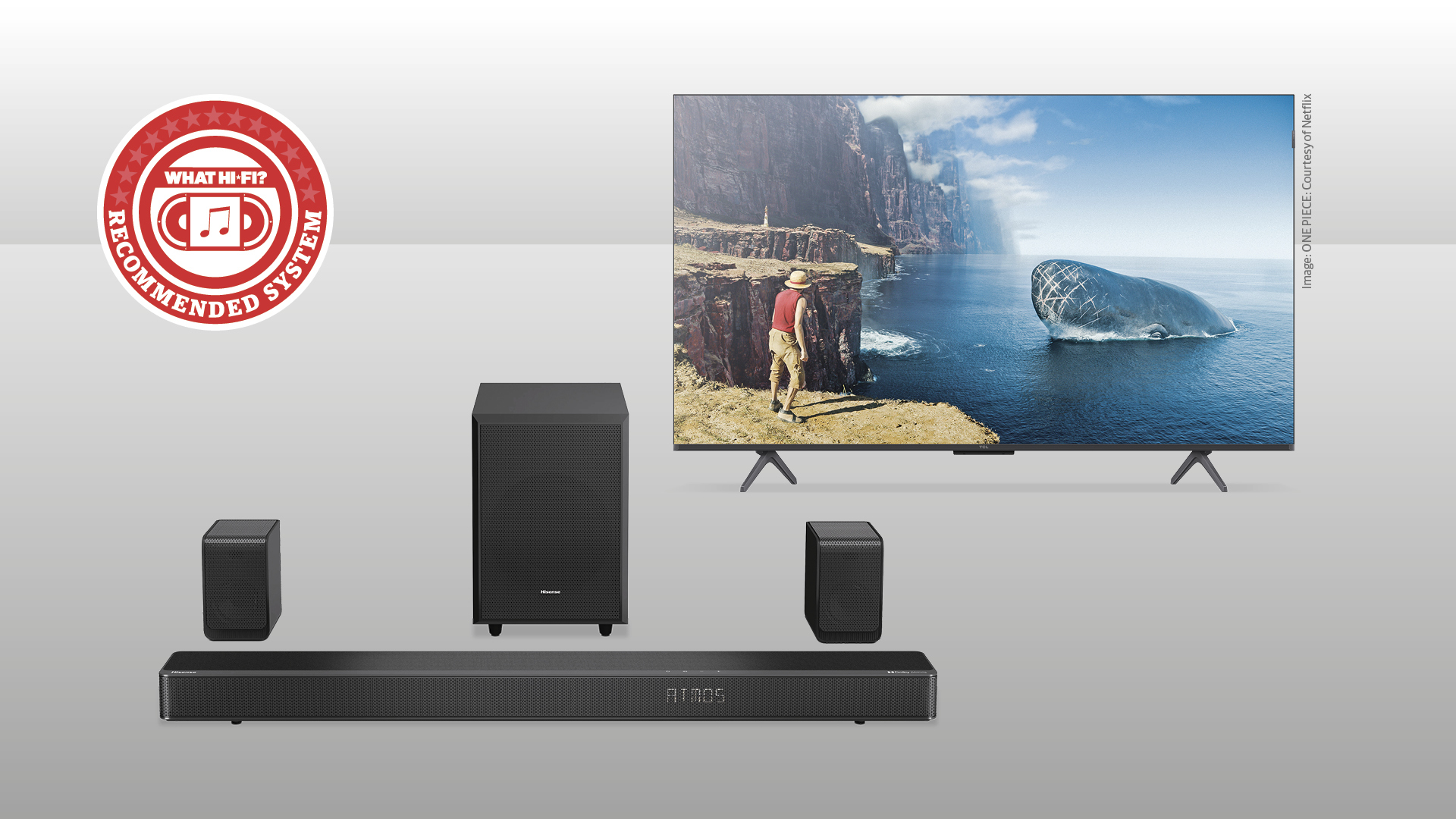
The pace of change in the consumer electronics industry is a blessing and a curse. For every gurn of excitement caused by a ground-breaking stride forward, there'll be a grimace of disbelief at a technology left behind or a half-formed idea hurried into life ahead of its time. The TV market does this better than any other, spewing out new acronyms, logos and certifications at a relentless rate in an effort to have us racing to upgrade our TVs.
We're sure any article about 8K TV provokes a similarly mixed reaction, after all, we're only really starting to enjoy, in any quantity, what 4K can deliver. And that would have been a concise summation of our feelings heading to the recent 8K Display Summit. Sure, we love to hear about cutting-edge technology but with a heavy-hitting room of industry professionals and Samsung as sponsor, were we expected to believe 8K resolution really was something to think about any time soon?
Sure enough, we were. And, even allowing for the partisan nature of the room, it was hard not be impressed by quite how far along various elements of the industry appear to be. LG, Samsung and Sony 8K TVs are already on sale, no less. But is 8K really going to go mainstream any time soon? Here's the 8K state of play today, by the people making it happen.
What's so good about 8K TV anyway?

The 8K Display Summit brought together people from a range of professional backgrounds, which successfully covered off just about every aspect of the necessary 8K ecosystem. And while there was plenty of positive spinning of all things 8K, there was a healthy does of reality and scepticism to keep things grounded, too.
Do we even need 8K resolution? What are the benefits? Can our eyes even deal with more pixels? Starting with 8K video creation, renowned Hollywood director of photography, Phil Holland, described 8K as a "moving photograph", such was the level of realism. Having shot in 8K for many years, he was adamant there was a clear step-up in visible quality.
Helped by HDR, the benefit of which was described as "access to more colour", 8K would deliver a completely immersive, premium viewing experience. There are also other professional benefits – 8K was good enough, said Holland, that image stills could be taken from 8K video and be high enough quality to be used in print magazines.
The idea of the moving photograph was backed by Florian Friedrich, managing director of FF Pictures, an HDR and 8K video service specialist. Friedrich described the ultimate 8K picture as "silent"; devoid of visible pixels or digital artefacts.
The latest hi-fi, home cinema and tech news, reviews, buying advice and deals, direct to your inbox.
"Even if you wouldn't be showing the content in 8K, downscaled 8K already looks better"
Dan Duran, RED Digital Cinema
Dan Duran, a post production and workflow specialist at RED Digital Cinema, was also on board with the better quality for professionals, for future-proofing your archive material (until 16K?!) and also for a better image, even on lower resolution screens. Even if you wouldn't be showing the content in 8K right now, as would very likely be the case, he claimed downscaled 8K already looks better. Using the example of Instagram, where all content is compressed to the same size, he argued the benefit of having shot in 7680 × 4320 was clear.
But what about the screen manufacturers? Jason Hartlove, CEO of Nanosys, is in charge at the company responsible for Samsung's Quantum Dot display technology. He too, is fully on board with 8K – and already part of the 8K production chain. He raised the point that the 8K benefit isn't just more pixels, but better pixels. The logic? The pixels need to shrink to fit them all on the screen, but transistors can't. This means that less light makes it through the panel, so pixels would have to become more efficient. Improvements to TV tech such as this are a necessary by-product of 8K resolution panels.

The missing piece of the jigsaw is nearly always the content. And despite the earlier enthusiasm from some producers and cameramen, there still seemed the obvious gap of getting this into people's living rooms in any meaningful quantity. Step forward Nagamitsu Endo, 8K producer for NHK Cosmomedia, the company responsible for 8K broadcast trials and ongoing plans in Japan.
NHK is Japan's national public broadcasting organisation and has been doing more than most to start showing 8K content, having delivered a number of broadcast trials in recent years. And Endo had a more headline-grabbing take on the advantage of 8K: "If you watch 8K, you feel like you're getting younger." That's one way of looking at the positive of what feels like an instant eye upgrade.
People reported a "30% improvement" from the 8K images and videos compared to 4K content
As if by way of evidence of 8K's superiority, we also heard from YungKyung Park, associate professor of the College of Art & Design at Ewha Womans University in Seoul. Park had conducted research in an effort to discover whether people could see the difference between 4K and 8K.
The research saw 120 people shown a series of images and videos on 65-inch TVs. They were then asked which they preferred and asked to describe why. Crunching the numbers, Park said people reported a "30% improvement" from the 8K images and videos compared to 4K content. Never an exact science, but we'll take the positive result from side-by-side comparisons as a good thing.
From our own 8K TV reviews, we're adamant the difference is clear. As we said when reviewing the 65-inch Samsung Q900R, "Predictably, the major upgrades over 4K are to detail and sharpness... the picture[s] appear deeper, more solid and more three-dimensional. In fact, it simply looks more lifelike."
And it was clear from this mini-industry of committed 8K champions, they they saw plenty of benefits from a further step up in resolution. So if we assume that, one day, we may well be prepared to pay for yet more pixels, what are the hurdles?
The 8K TV challenges
In a surprise to no-one, when it came to the not-so-rosy aspects of a potential move to 8K, "content" was the first word on our lips. With some 4K fans still craving far more 4K content, and plenty of channels and TV shows still not even in HD, it's no surprise that 8K content feels a long way off.
NHK is doing its level best to deliver 8K content in Japan, and after some initial tests is now regularly broadcasting 8K. Other than some 8K videos on YouTube, that's about the size of it for now.
On this subject, there was a real demand for more 8K cameras on the market to put a rocket up this aspect of the food chain. Yes, there's content being shot, and a fair amount of footage on YouTube, but more cameras was seen as a key way to drive uptake from industry professionals.
"Not enough people have 8K displays yet. Maybe they’re waiting for the Olympics?"
Nagamitsu Endo, NHK Cosmomedia
Even with the content, it's pretty hard to actually watch. NHK's Endo pointed to a lack of 8K TVs as an ongoing challenge when it comes to NHK's 8K broadcast plans in Japan. "There’s still not enough 8K displays in Japan… not enough people have 8K displays yet. Maybe they’re waiting for the Olympics?", said Endo, pointing to NHK's next big 8K broadcast trial in Japan, the 2020 Olympics.
Those 8K TVs that have come to market are of course very expensive but also pretty big. 65in and above is seen as necessary for 8K video and that not only requires a fair chunk of real estate but a fair chunk of cash. And this is of course a hurdle.
"The major TV setting in the United States is $500. Price point is still very important," said Sonia Chen, director of display marketing at Samsung Electronics’ Device Solutions America. We're obviously a long way off prices that low - the 8K TVs on sale right now currently cost in the region of five times that amount.
The good news for consumers is display prices are expected to continue to fall 20 per cent per year, according to Bob O'Brien of Display Supply Chain Consultants, driven by the increasingly dominant Chinese manufacturers, themselves buoyed by serious investment from the Chinese government. This will only bring down prices over time. But how long will that time be? Not that long, if you ask these interested parties...
8K TV: the next steps

So what's next? And when can we really expect 8K TV to be a mass market reality? Assuming it ever is...
Chen was certainly confident. She talked of seven year transition cycles when it comes to a step-up in TV resolution – and she believes 2019 is the first year of this transition period from 4K to 8K. Of course, that doesn't mean 4K is over - not even close - but in her mind, the transition begins now. And it could be a quick one.
Chen predicts we're two years ahead compared to the transition from HD to 4K. The move to 8K, she thinks, will be "shorter and sweeter" than that. This will in part be driven by 5G. Those superfast network speeds will facilitate higher quality video streams that demand bigger and better screens, which is where 8K TVs come in. That's Samsung's plan, anyway - and it's clear the company wants to try and 'own' 8K, hence it getting ahead of the curve now.
"Technology is moving much faster than when 4K was released"
Phil Holland, PHFX
The idea that 8K could be with us sooner rather than later was backed by the cameramen in the room. Phil Holland from PHFX, said: "Technology is moving much faster than when 4K was released… With 8K we can shoot it and then view it today, which took a few years with 4K."
And of course the simple desire of big brands to keep selling new TVs will drive 8K adoption, tempting early-adopters with bigger screens offering more pixels. But they won't have it all their own way. Bob O'Brien, Display Supply Chain Consultants, predicted upstart Chinese brands would enter the market with cheap 8K TVs in an effort to position themselves alongside the premium TV brands, grabbing headlines and consumers with knockdown 8K TV prices. There are of course a number of 8K TVs on sale already, such as the Sony KD-85ZG9 and the Samsung QE65Q900R, though you're looking at spending thousands if you want one now.
As for the 8K content plan, there are at least some developments in the pipeline. NHK, already broadcasting 8K in Japan on a regular basis, remember, says it's still on track to deliver the 2020 Olympics in 8K - and there's nothing like a big sporting event to grab some broadcast headlines.
Samsung Display's Chen sees streaming as key, and revealed she expects streaming services such as Amazon and Netflix to be the early adopters - no surprise after they led the way with 4K. Chen tipped 8K TV shows and films to launch on these services by 2020/21. And that's not as far-fetched as it may sound; Japanese company Rakuten says it will offer 8K streaming by the end of 2019. And there's the new Apple streaming and Disney streaming services on the way, too, increasing the need for differentiation over rivals.
Maybe not today, maybe not tomorrow, but soon

If you believed everything you heard in the room at the 8K Display Summit, you'd be preparing for 8K from right now. Samsung wants to "own" 8K and not only is the company on its second-generation – at least, depending on how you count them – of 8K TVs, it's confident that the move to 8K starts from now, with mainstream adoption in a few years. It's likely Sony will give Samsung a run for its money, with the first Sony 8K TVs on sale now, and there's an LG 8K OLED in the pipeline, too.
Of course, we will need more content, but as one TV manufacturer told us, "If we don't make the TVs, nobody will make the content." Somebody has to make the first move.
Fear not, we're eager to assure you that 4K is realistically very much the here and now. But if we want technological upgrades and developments to come, which we do, then of course someone has to lead the way. And the TV manufacturers are only too happy to oblige. Prepare your eyeballs...

Joe is the Content Director for What Hi-Fi? and Future’s Product Testing, having previously been the Global Editor-in-Chief of What Hi-Fi?. He has worked on What Hi-Fi? across the print magazine and website for almost 20 years, writing news, reviews and features on everything from turntables to TVs, headphones to hi-fi separates. He has covered product launch events across the world, from Apple to Technics, Sony and Samsung; reported from CES, the Bristol Show, and Munich High End for many years; and written for sites such as the BBC, Stuff and The Guardian. In his spare time, he enjoys expanding his vinyl collection and cycling (not at the same time).
